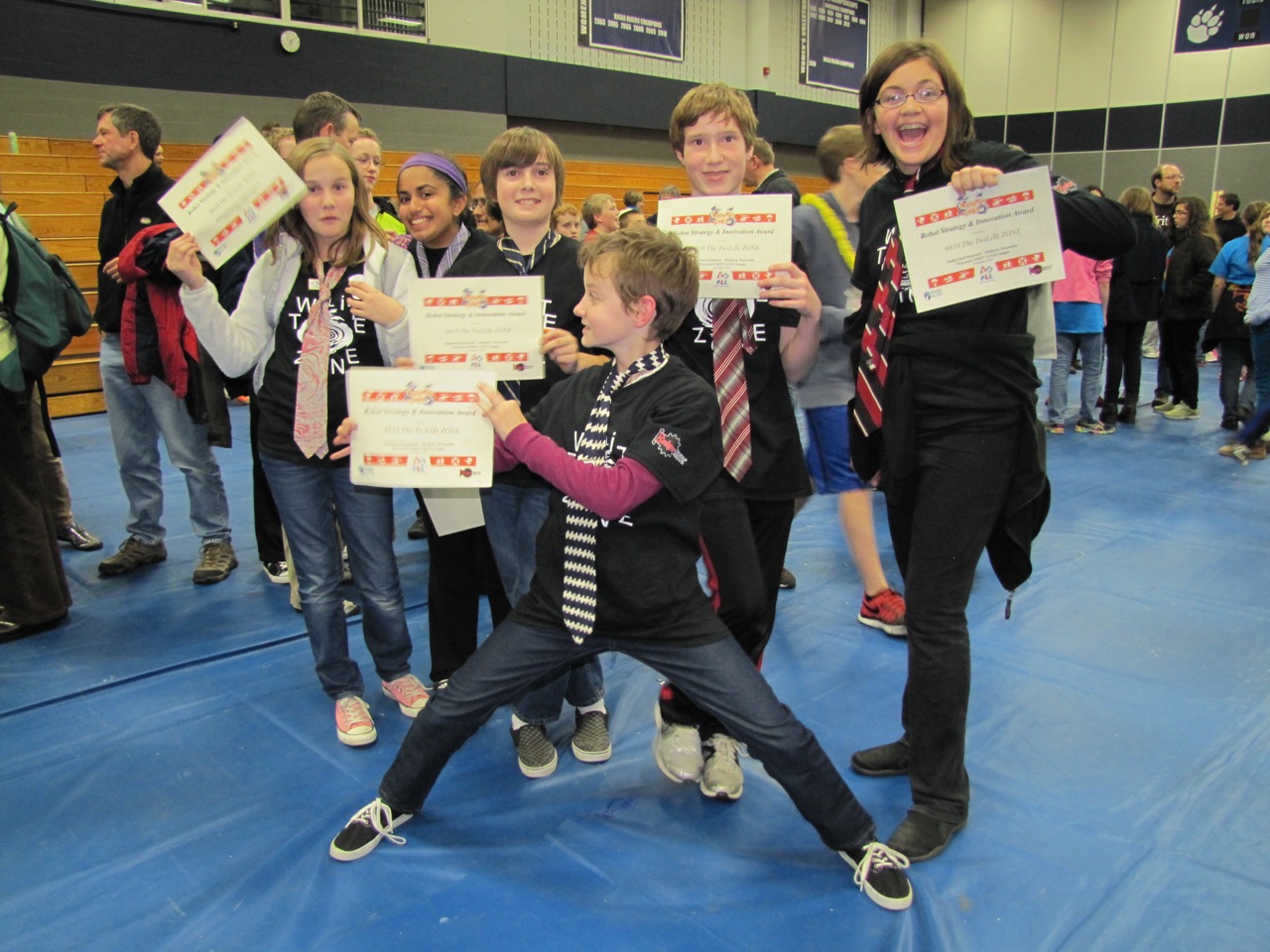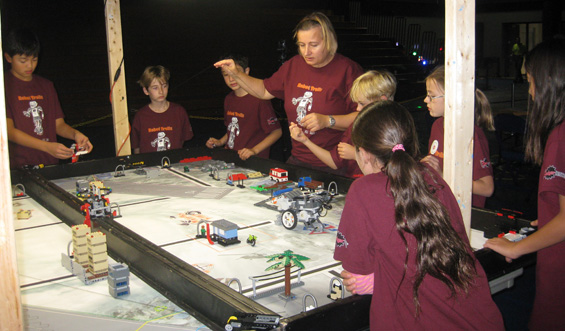Science Mentors Who Make a Difference
Science mentors matter. Combine a science mentor with a group of kids brainstorming to solve a scientific problem and you’ve got a recipe for unbridled excitement, education, and possibly, future scientists in the making. In fact, the positive influence of a passionate science mentor is well-researched. Early exposure to the wonders of science often results in increased participation in science, technology, engineering and mathematics (STEM) fields.
The Space Science and Engineering Center (SSEC) has no shortage of scientists and engineers who regularly share their love of earth science discovery and problem-solving with school children of all ages. For the past several months, Eva Borbas, a scientist with the Cooperative Institute for Meteorological Satellite Studies (CIMSS) and Joe Taylor, SSEC research engineer, have coached and advised teams of elementary and middle school students as they prepared for competition in the Badgerland Regional FIRST LEGO® League Tournament which took place on November 9th in Madison.
This year’s theme, appropriately named “Nature’s Fury,” was all about natural disasters; a perfect fit for SSEC scientists to become involved because of the Center’s well-known focus on atmospheric science and satellite meteorology research, including severe weather events. The competition focused on two components: 1) building and programming a robot to accomplish specific tasks and 2) completing a research project.
Each team demonstrated their skills as they built a Lego-powered robot to help deal with problems that develop in the wake of a natural disaster, such as the need for rescue missions or sandbagging the banks of cresting rivers. Team members programmed the robot to navigate the playing field and successfully complete missions within two and a half minutes.
The second element of the competition required teams to identify, explore and solve a problem related to natural disasters – anything from floods to hurricanes to tsunamis and typhoons – and what happens when those events collide with people where they live and work. Following independent research of a natural disaster problem, teams presented a real solution to a panel of judges.
Taylor’s group, the TWiLiTE Zone (Tropospheric Wind Lidar Technology Experiment), invented a “Global Whale” to reduce hurricane intensity, collect data and provide an early warning system. The whale, a submergible structure built of natural and synthetic materials, acts like a large barrier island to mitigate the impact of a hurricane. In conducting their research, the team consulted Taylor who gave them a picture of the current state of hurricane research, including SSEC’s work with the Hurricane and Severe Storms Sentinel (HS3) field campaign – in fact, the Global Whale is equipped with a suite of instruments similar to those carried on the HS3 aircraft!

Team TWiLiTE Zone was nominated for five awards including the Championship Award. They won the Robot Strategy and Innovation Award and will move forward to the state competition in December. Photo credit: Joe Taylor.
According to Taylor, “It was pretty impressive – when the group presented to me they mentioned things that I had told them directly. It was clear they got it!”
Because flooding in Wisconsin devastates so many lives and destroys so much property, the Robot Trolls, coached by Borbas, focused their research on flood preparedness. To kick off their research, several team members attended the SSEC-sponsored Weather Ready Nation Town Hall with their coach. The team conducted a survey to find out just how many families have an emergency evacuation plan and survival kit, discovering that 70% of surveyed families have no plan. To address this problem, the Robot Trolls programmed in ‘Scratch’ to produce a video targeted at school kids, who can then help their families with disaster planning.
Taylor and Borbas weren’t the only mentors from SSEC. Margaret Mooney, Director of Education and Outreach at CIMSS, advised a team representing the Girls Club of Monona, and Derrick Herndon, CIMSS researcher, coached another team. Together, they coordinated an after-school weather club at SSEC to help teams prepare for the “Nature’s Fury” competition.
Like their own math and science mentors, Borbas and Taylor continue the mentoring tradition of challenging their students’ thinking, exposing them to the language of science and above all, keeping it interesting and exciting.
By Jean Phillips

